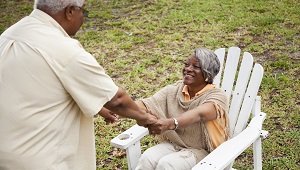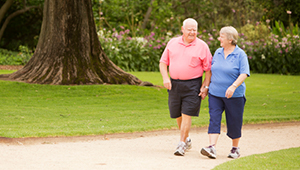Thinking about getting an activity tracker? Here's a quick guide.
Wearable monitors are a fun way to track your daily activity. Before you buy a device, here are some tips about features to look for.
Activity trackers are everywhere, possibly rivaling water bottles as one of the most widely used fitness accessories. While these tools offer an ever-expanding array of trackable options — daily steps, heart rate, and sleep, to name a few — much of their potential value comes down to one basic principle, according to researcher Dori Rosenberg, PhD, MPH: To successfully make a behavior change (such as walking more or sitting less), having feedback on your behavior can be key.
“Activity trackers provide an easy way for us to gauge how active we are and whether we are meeting fitness goals we set for ourselves,” says Dr. Rosenberg, an associate investigator at Kaiser Permanente Washington Health Research Institute (KPWHRI) who has conducted extensive research into physical activity and sedentary time — often using activity trackers.
“In one study, we found that providing people with a Fitbit device to track their steps after having bariatric surgery resulted in an increase of almost 2,000 steps per day,” says Dr. Rosenberg, adding “People really enjoyed using their device.”
So how do you find a device you’d enjoy using — and that’s a good match for your activity goals? Dr. Rosenberg provides the following insight and advice.
What are activity trackers and what do they measure?
- If you would like an old-school activity tracker, the simplest mechanical pedometers just count steps — no batteries or electronics needed. These are usually worn at the waist.
- Electronic activity trackers for your wrist, waist, finger, or pocket are usually accelerometers. Your phone may also track your activity through its accelerometer. Accelerometers electronically detect up-and-down, side-to-side, and back-and-forth motion. Wearable accelerometers measure if you are moving, but they can be fooled. Standing or cycling might look like inactive time if the device does not move in the right way.
What features should you look for in an activity tracker?
Dr. Rosenberg suggests asking yourself a few questions if you're thinking about buying an activity tracker:
- Do you want to wear a tracking device or use your phone? If you use your phone, make sure to carry it with you anytime you move.
- If you opt to get a separate device, where do you want to wear the tracker — on your wrist or finger, or at your waist?
- Are you willing to charge the device, or do you want one powered by a watch battery? The latter do exist and never need charging.
- Do you want a waterproof device?
- What information do you want? Most trackers count steps. Some also measure sleep, pulse, calories burned, and intensity of movement, among other measures. Some vibrate or have a visual prompt to remind you to take breaks from being inactive by standing or moving around.
- How do you want to get the information: on the device screen or through a website or smartphone app?
- How important is accuracy? For most people, trackers are a good measure of steps and movement patterns unless they walk very slowly or use an assistive device. However, not all devices have been carefully checked to see if they accurately measure activity and calories used, Dr. Rosenberg notes. Also, trackers can be adequate for sleep monitoring but are not a replacement for having a real sleep study done if you have trouble with daytime sleepiness.
Read consumer reviews of devices, Dr. Rosenberg recommends, and ask people who use them to find out which trackers are comfortable, easy to use, and have the features you want. Finally, she notes, you might not need equipment to be more active. Some people just set simple alarms to remind them to stand and walk around. You can also gradually build more exercise into your daily routine with these 5 tips.
Live Healthy: Top Topics
Research

Helping older adults improve health by sitting less
Dr. Dori Rosenberg discusses her work on a new Cochrane review looking at ways to help older adults be less sedentary.
Healthy Aging

Stand up for your health!
Researcher Dori Rosenberg shares the importance of being less sedentary — and tips for sitting less.
Healthy Findings Blog

We decreased people’s daily sedentary time by an hour
Changing behavior isn’t easy, but Dr. Dori Rosenberg helped older people to stand and walk more.


